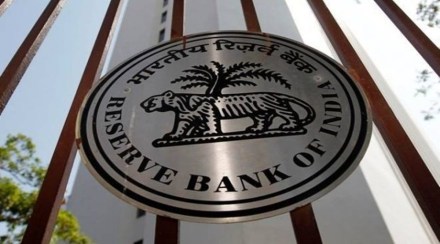By Shehnaz Ahmed
The standard operating protocol for the inter-operable regulatory sandbox continues to rely on disparate sandbox frameworks of financial regulators. This may be disadvantageous for businesses in case of differences in the primary and associate regulators’ requirements
RBI has released a standard operating procedure (SOP) for an Inter-operable Regulatory Sandbox (IoRS) prepared by the Inter-Regulatory Technical Group on Fintech under the Financial Stability and Development Council. The IoRS allows the testing of financial products/services that fall within the remit of more than one regulator. This is an important development for fintech innovation that often blurs sectoral demarcations of the Indian financial system. However, the SOP does not address important issues likely to arise in testing cross-sectoral fintech innovations.
A regulatory sandbox (sandbox) allows live testing of innovative products/ services under regulatory supervision and with regulatory relaxations. Test results may enable regulators to design evidence-based and innovation-friendly regulations. Financial regulators like RBI, Sebi, IRDAI, and IFSCA operate their separate sandboxes in India. Interested entities must separately approach concerned regulators to participate in their sandbox. This regulatory framework which looks at innovation within the traditional silos of banking, securities, pension, and insurance does not account for the cross-sectoral nature of fintech innovation. For instance, a fintech application may be designed to help a farmer to buy crop insurance, provide advice on loan products, and manage cashflows from sales. This application may fall within the ambit of RBI and IRDAI. To test this application, the developer must approach both regulators and go through separate sandbox testing processes of these regulators before launching the product. This will hinder innovation and raise unnecessary compliances for start-ups focusing on innovations. The IoRS seeks to address these challenges of existing sandbox frameworks through a common application window to approach financial regulators for cross-sectoral innovations.
Also Read: The need for a fiscal council
As per the SOP, the regulator under whose remit the product’s ‘dominant feature’ falls will be the Principal Regulator (PR), and the regulator under whose remit other features fall will be the Associate Regulator (AR). The determination of PR and AR is essential because the product will be tested as per the sandbox framework of the PR. This determination is based on the type of enhancement to existing products (like loans, deposits, securities, etc.) and the number of regulatory relaxations sought. This does not account for innovations where enhancements may equally apply to products falling within the ambit of more than one regulator. Despite providing a common application window, the SOP continues to rely on disparate sandbox frameworks of financial regulators. This may be disadvantageous for businesses in case of a difference in the PR and AR regulatory requirements. For instance, while RBI and IRDAI allow both regulated and unregulated entities to participate in sandboxes, Sebi only allows regulated entities. If Sebi is the PR, a non-registered Sebi applicant must execute an MoU with a registered entity to apply to the IoRS. For many applicants, it may be challenging to find an interested regulated entity. Consumer protection measures also vary across different sandboxes. While RBI and Sebi envisage user compensation, IRDAI is silent on it. Further, only RBI requires applicants to purchase indemnity insurance to cover projected liability to consumers. There is also no uniformity in the duration of sandbox testing. Further, compliances such as submission of reports, determination of boundary conditions, etc, are also different across different sandboxes.
In the UK, the Financial Conduct Authority (FCA) sandbox allows such cross-sectoral testing. For instance, FCA has admitted a tool that profiles investor motivations and preferences around their investments and portfolio’s social and environmental impact. This tool may be relevant for investments across various sectors—payments, securities, etc. Similarly, FCA has admitted innovations to improve customer onboarding and KYC processes using technologies like blockchain and regtech solutions that leverage newer technologies to assess the compatibility of financial products with existing regulations or for better reporting. One can expect similar products for the IoRS testing. However, unlike the applicants in the UK, who have a clear and uniform regulatory framework from the FCA, applicants in India will have to comply with the regulations of the PR as well as terms and conditions imposed by the AR, which may be substantially different, as discussed above. The lack of regulatory uniformity acts as a barrier to innovations. Given the cross-sectoral nature of the innovations under the IoRS, it is important to ensure that adequate safeguards based on the best practices of all regulators are incorporated into the SOP.
Regulatory coordination sought to be created through the IoRS should be supplemented with a delineation of common standards applicable to IoRS testing. These common standards will be the minimum requirements applicable to any cross-sectoral innovation and can cover issues on consumer protection, nature of relief, duration of the sandbox, and reporting compliances. The SOP may also specify sectoral requirements as deemed relevant by regulators. A unified framework is important for harmonised regulatory and policy responses to fintech innovations and leveraging IoRS’s true potential.
(The author is Fintech lead at Vidhi Centre for Legal Policy. Views are personal.)
